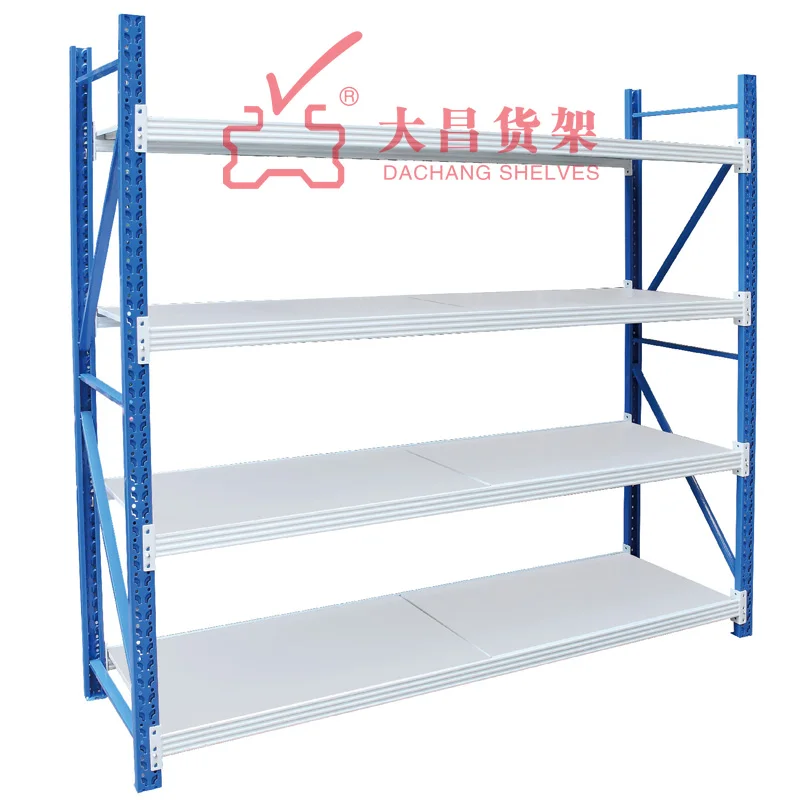In the realm of storage solutions, shelving systems play a pivotal role in organizing and maximizing space. Two primary materials dominate this domain: wood and metal storage shelving systems. Each material boasts distinct characteristics that cater to different needs and preferences. Understanding the comparison between wood and metal storage shelving systems to help you make an informed choice for your specific requirements.
Durability and Strength
Wood Shelving: Wood shelving systems, often crafted from materials like pine, oak, or plywood, offer a classic aesthetic appeal. However, they might be susceptible to warping or damage due to moisture and temperature fluctuations.
Metal Shelving: On the other hand, metal shelving, typically made from steel or aluminum, is renowned for its durability and strength. It's less prone to damage from moisture and can withstand heavier loads, making it ideal for industrial or heavy-duty storage needs.
Aesthetic Appeal
Wood Shelving: Wood shelving systems exude warmth and natural beauty, providing a rustic or traditional look to spaces. They can seamlessly blend into various decor styles, offering a more inviting feel.
Metal Shelving: Metal shelving systems often project a sleek, modern appearance. They might be preferred in contemporary settings or areas requiring an industrial, utilitarian look.
Customization and Versatility
Wood Shelving: Wood shelving systems are relatively easier to customize or modify. They can be stained, painted, or altered in size and shape, offering more versatility in design and customization.
Metal Shelving: While metal shelving might have limitations in customization compared to wood, it excels in adaptability for various environments, especially those demanding resilient and standardized storage solutions.
Maintenance and Longevity
Wood Shelving: Wood shelving systems may require more maintenance, such as occasional polishing or sealing, to protect against wear and tear, scratches, and moisture damage.
Metal Shelving: Metal shelving systems are generally low-maintenance and require minimal care. They are less prone to damage from environmental factors, providing a longer lifespan without significant upkeep.
Cost Considerations
Wood Shelving: Initially, wood shelving systems might be more budget-friendly compared to metal alternatives. However, long-term costs might increase due to maintenance and potential replacements.
Metal Shelving: While the upfront cost for metal shelving systems could be higher, their durability and longevity may offset additional expenses incurred in maintenance and replacements over time.
Weight Capacity
Wood Shelving: Wood shelving might have limitations concerning weight capacity, especially with larger spans or heavier items. Overloading wooden shelves can lead to sagging or structural issues.
Metal Shelving: Metal shelving typically boasts higher weight capacities, making them suitable for heavy items and ensuring structural integrity even under significant loads.
Environmental Impact
Wood Shelving: For eco-conscious consumers, wood shelving sourced from sustainably managed forests can be a more environmentally friendly option compared to metal, which involves energy-intensive manufacturing processes.
Metal Shelving: However, metal shelving systems can be recyclable, reducing their environmental impact. Opting for recycled metal or environmentally conscious production methods can mitigate this concern.
In conclusion, the choice between wood and metal storage shelving systems ultimately depends on individual preferences, functional requirements, and the intended use of the shelving.
Choose Wood Shelving If
● You prioritize aesthetic appeal and a warm, traditional feel.
● Customization and adaptability in design are essential.
● Your storage needs are moderate and not heavily weighted.
Opt for Metal Storage Shelving Systems If
● Durability, strength, and higher weight capacities are crucial.
● Low maintenance and long-term cost efficiency are priorities.
● Do you prefer a sleek, modern appearance or need resilient, standardized storage solutions?
When selecting between wood and metal storage shelving systems, considering factors like aesthetics, functionality, durability, maintenance, and environmental impact will guide you toward the most suitable option for your storage requirements.


.jpg)